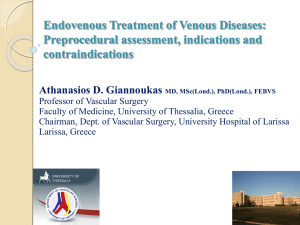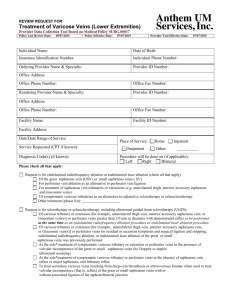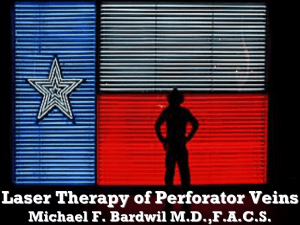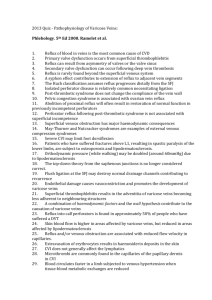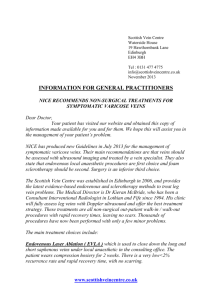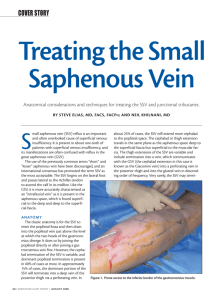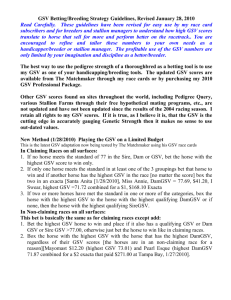Venous Insufficiency
advertisement
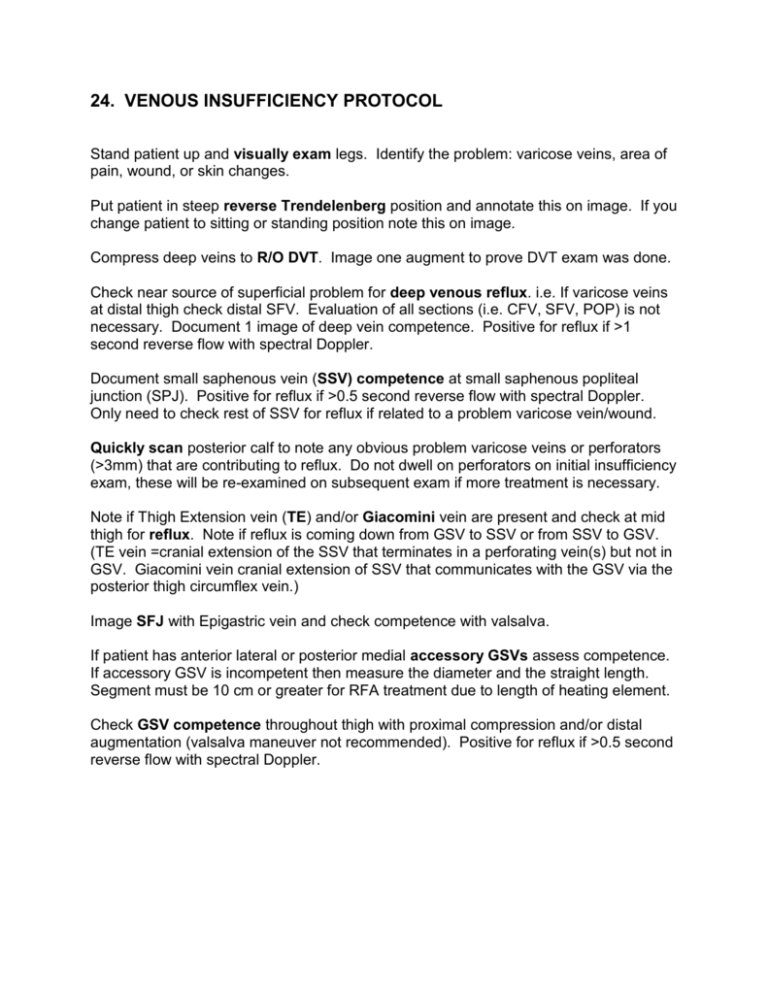
24. VENOUS INSUFFICIENCY PROTOCOL Stand patient up and visually exam legs. Identify the problem: varicose veins, area of pain, wound, or skin changes. Put patient in steep reverse Trendelenberg position and annotate this on image. If you change patient to sitting or standing position note this on image. Compress deep veins to R/O DVT. Image one augment to prove DVT exam was done. Check near source of superficial problem for deep venous reflux. i.e. If varicose veins at distal thigh check distal SFV. Evaluation of all sections (i.e. CFV, SFV, POP) is not necessary. Document 1 image of deep vein competence. Positive for reflux if >1 second reverse flow with spectral Doppler. Document small saphenous vein (SSV) competence at small saphenous popliteal junction (SPJ). Positive for reflux if >0.5 second reverse flow with spectral Doppler. Only need to check rest of SSV for reflux if related to a problem varicose vein/wound. Quickly scan posterior calf to note any obvious problem varicose veins or perforators (>3mm) that are contributing to reflux. Do not dwell on perforators on initial insufficiency exam, these will be re-examined on subsequent exam if more treatment is necessary. Note if Thigh Extension vein (TE) and/or Giacomini vein are present and check at mid thigh for reflux. Note if reflux is coming down from GSV to SSV or from SSV to GSV. (TE vein =cranial extension of the SSV that terminates in a perforating vein(s) but not in GSV. Giacomini vein cranial extension of SSV that communicates with the GSV via the posterior thigh circumflex vein.) Image SFJ with Epigastric vein and check competence with valsalva. If patient has anterior lateral or posterior medial accessory GSVs assess competence. If accessory GSV is incompetent then measure the diameter and the straight length. Segment must be 10 cm or greater for RFA treatment due to length of heating element. Check GSV competence throughout thigh with proximal compression and/or distal augmentation (valsalva maneuver not recommended). Positive for reflux if >0.5 second reverse flow with spectral Doppler. 24. VENOUS INSUFFICIENCY PROTOCOL (CON’T) IF GSV IS INCOMPETENT: Document incompetence with 1 image. No need to assess for competence distally. Measure representative GSV diameter (inner to inner) in proximal, mid, distal thigh and proximal calf. Also measure any focal bulges. Note any large branches or varicose veins (same size as GSV) or other issues that might cause a problem for the RFA catheter. Quickly scan down leg to note any obvious problem perforators (>3 mm). Don’t dwell on perforators. If GSV is incompetent it will be treated with RFA first, if RFA treatment is not sufficient another venous exam will be performed to assess treating perforators or other veins. IF GSV COMPETENT: Document competence with 1 image. If accessory GSV is also competent continue to look for a cause of patient’s symptoms. i.e. If a large varicose vein is the problem look for a contributing perforator. Or if a wound is the problem look for perforator or varicose vein deep to wound. FOLLOW UP VENOUS INSUFFICIENCY EXAM: These exams will be tailored to the patient’s continued symptoms post RFA or stripping. A problem perforator will be distal to the disease and show reflux and be > 3 mm. A reentry perforator may be >3mm but will not have reflux and therefore is not the problem. Perforators are positive for reflux if flow reverses for >.35 sec by spectral Doppler or bi-directional colorflow is noted. If a perforator is the source of the problem, measure coordinates so the perforator can be easily located for mapping. For anterior or posterior calf perforators a measurement is taken from anterior surface of tibia to the perforator at the level of the deep fascia and a second measurement is taken from planter surface of the heel to the perforator. For thigh perforator measure from up from knee crease and back from anterior su
